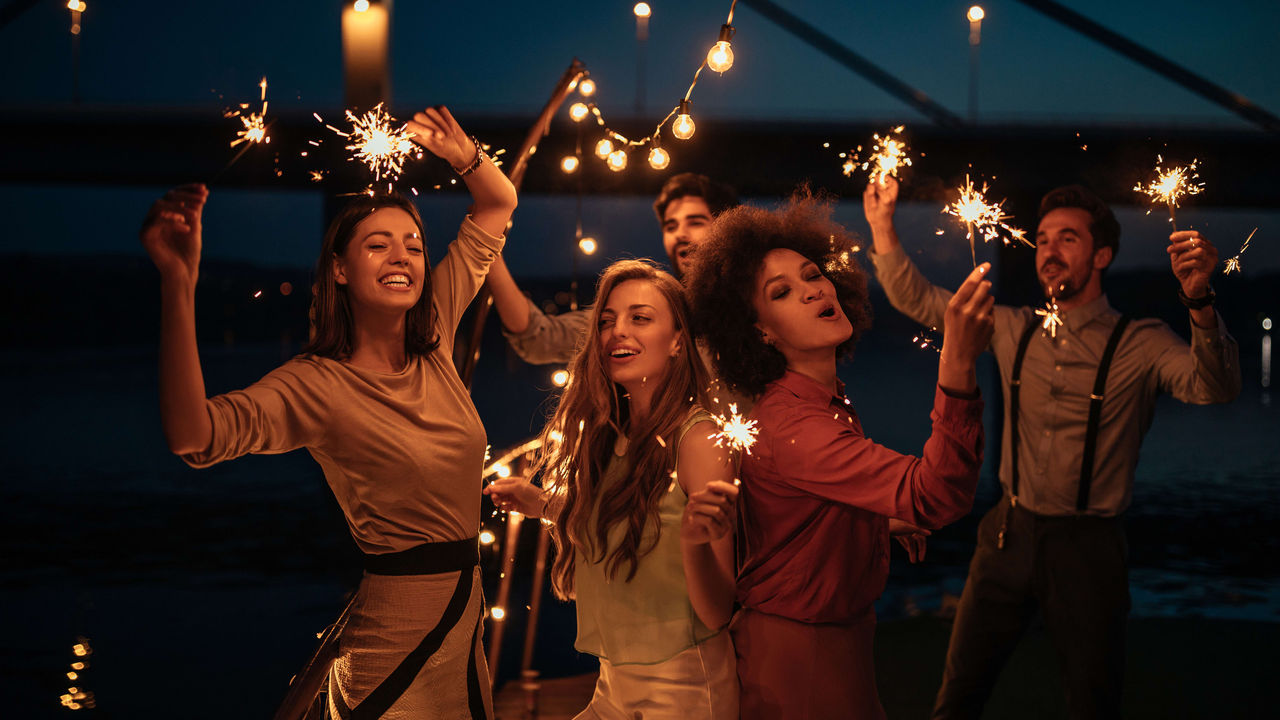Here's How Managers Can Make the Office Holiday Party Recovery-Friendly
Four ways to make the holiday party more inviting to employees who are in recovery or trying to cut back on their alcohol consumption

For many companies, this December will be the first time since 2019 that employees can come together for an in-person holiday party. However, mental health experts warn that more employees may be dealing with alcohol addiction than in years past, and managers should be mindful of employees who are in recovery or trying to cut back on their alcohol consumption.
"Substance-use struggles are a daily occurrence for the 1 in 10 Americans battling addiction, and it only got worse with the pandemic," said Marc Turner, interim president and CEO of Gateway Foundation, which manages 16 drug and alcohol treatment centers in Illinois.
Since 2019, more people have had to face the reality that they have an alcohol use disorder and need to navigate the world differently while others are trying to cut back on their alcohol dependence, Turner said.
In the early days of the COVID-19 pandemic, an increasing number of people turned to alcohol to cope. According to the Centers for Disease Control and Prevention, as of June 2020, 13 percent of Americans reported starting or increasing substance use as a way of coping with stress related to the pandemic.
This increase in alcohol consumption was sustained through at least November 2020, according to a study by RTI International, a nonprofit research institute in Research Triangle Park, N.C. The study found that, compared with February 2020, alcohol consumption in November 2020 was 39 percent higher, in terms of drinks per month.
Meanwhile, about 22.3 million Americans—more than 9 percent of adults—live in recovery after some form of substance-use disorder, according to a peer-reviewed study published in October by the Recovery Research Institute at Massachusetts General Hospital.
"While many have long awaited the opportunity to gather in person with co-workers to celebrate the holidays once again, it's important for those who are planning holiday celebrations to be aware of the significant increases in those reporting substance abuse issues since the pandemic, and to create an event everyone can enjoy and where everyone feels safe," said Barbie Winterbottom, CEO of the Business of HR, a consulting firm based in Tampa, Florida. "Creating an event that is psychologically safe and inclusive is critically important for all employees to feel a sense of belonging."
Here are four ways to make the office holiday party more inviting to employees who are in recovery or trying to cut back on their alcohol consumption.
1. Make the event about more than just drinking.
Create an event that employees can enjoy even if they're not drinking, said Ashley Loeb Blassingame, co-founder and chief people officer of Lionrock Recovery, an online substance abuse counseling service based in Petaluma, Calif.
"Make sure the whole premise of the party isn't based on consumption of alcohol," she said. Find an activity that gets everyone engaged and talking. Possible ideas include cookie decorating, games and contests, or attending a concert or sporting event.
An officewide gift exchange is a fun activity that involves everyone, but be sure to set ground rules ahead of time by letting people know that no alcohol or substance-related gifts are allowed, said Lisa Blanchard, chief clinical officer at Spectrum Health Systems in Worcester, Mass.
2. Put mocktails on the menu.
The event invitation should clearly state that alcoholic and nonalcoholic beverages will be available, so employees know they will have options, Winterbottom said.
Rather than having only soda and juice available as alternatives to alcoholic drinks, be more creative and offer nonalcoholic beer and mocktails. "Present the nonalcoholic option as equal," said Casey Davidson, a Seattle-based life and sobriety coach and owner of Hello Someday Coaching.
For instance, place the nonalcoholic options on the bar along with wine, beer and other alcoholic drinks being served. If waiters are passing around trays of drinks, make sure there are nonalcoholic options on that tray, she said. If there's a seated dinner, avoid having wine glasses on the table waiting to be filled by waiters, because to say no, an employee would have to put a hand over the glass and ask the waiter not to fill it.
"The sober curious movement is growing, and lots of people are struggling with their alcohol consumption, so it's important to normalize not drinking," Davidson said.
3. Consider having a daytime event.
Many holiday parties tend to be after work or on the weekends, and that timing is often associated with drinking. "Consider a brunch or lunch party where it wouldn't be appropriate for drinking, as the staff will need to get back to work after," said Nicole Lacherza-Drew, Psy.D., owner of Vici Psychological Care, LLC, in Denville, N.J.
4. Keep the celebration optional.
Some employees may not want to celebrate the holidays at all, so be sure to keep holiday celebrations optional. "Remind employees that it is their choice whether or not to participate, and company leadership should make it clear that attendance is optional," said Star Carter, co-founder, chief operating officer and general counsel at Kanarys Inc., a Dallas-based software firm that focuses on diversity, equity and inclusion data.
Also, make it easy for employees to leave the party when they're ready. For instance, don't require employees to stay until after the CEO makes a toast, Turner said. "Allow employees to make an individual choice in how they will navigate the holiday party."
Lisa Rabasca Roepe is a freelance writer based in Arlington, Va.



